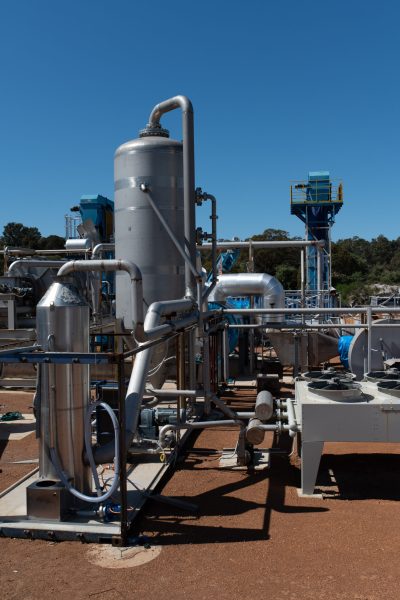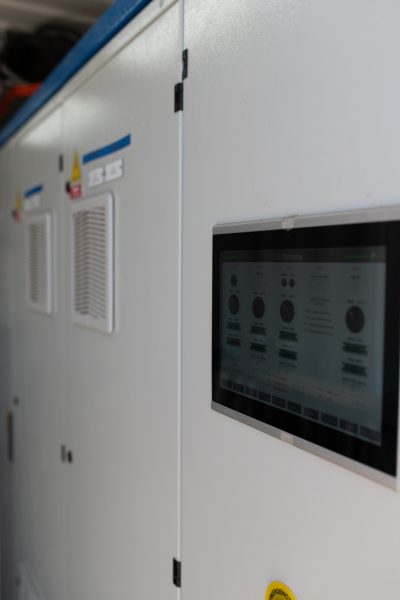About
Pyrolysis is the thermal decomposition of biomass in the absence of sufficient air. The pyrolysis of biomass produces four products: non-condensable gases, wood vinegar, liquid bio-oil, and solid biochar.


A key feature of Renergi’s pyrolysis technology is simultaneous pyrolysis and particle size reduction (grinding), hence its name “grinding pyrolysis”. As a result, the technology can accept a range of biomass feedstock (including municipal solid waste) with a wide range of particle sizes ranging from microns to a few centimetres in one mixture or separately. This greatly reduces the grinding cost which is required by competing technologies.
Renergi’s grinding pyrolysis technology needs little or no carrier gas for commercial operation. This has two additional benefits:
- the overall process is greatly simplified for much increased efficiency; and
- without the dilution of bio-oil vapour by inert carrier gas, the bio-oil vapour can be easily condensed and collected in a commercial scale operation.
The technology is modular, ideally suited to process the widely distributed biomass by minimising the cost to transport wet bulky biomass over a long distance. It can also easily reach large scales if a centralised biomass resource is available.
Renergi’s first commercial-scale pyrolysis plant project in Collie, Western Australia, has been successfully built and is now close to a commercial reality. Funded by ARENA, the project demonstrates the commercialisation of this technology, converting inedible plant material (biomass) and municipal solid waste (garbage) into biofuels and biochar that reduce carbon dioxide emissions and improve energy security, while diverting waste from landfill.
Renergi’s Grinding Pyrolysis Technology can be used in a wide range of applications:
Soil conditioning and carbon sequestration: Biochar from Renergi’s pyrolysis technology is in the particle size range very close to that of natural biochar. Therefore, the biochar can be returned to agricultural soil to improve soil conditions while sequestering carbon safely and permanently. The agricultural application of biochar is widely researched, documented, and known well but has yet to become mainstream. Renergi hopes to change that with our cutting-edge technology and scale capabilities.
The products from pyrolysis have plenty more application potential than just agriculture.
Creating low-emission energy and advanced biocarbon products from the pyrolysis of biomass and municipal wastes is an area Renergi is considered a global leader in research, having completed decades of academic research and practical demonstration, most notably two phases of ARENA assisted R&D in 2009 to 2012 and 2014 to 2019.
The production of advanced, low emission drop-in biofuels: This pyrolysis technology is part of Renergi’s advanced biofuel technology
Bio-oil as a heating oil: The bio-oil can be used as a heating oil following the ASTM standard ASTM D7544 – 12.
Production of high-value carbon materials: The pyrolysis products can also be used to make high-value carbon materials.
You can read more about the project results and lessons learnt here.